#Frederic Charter
Photo

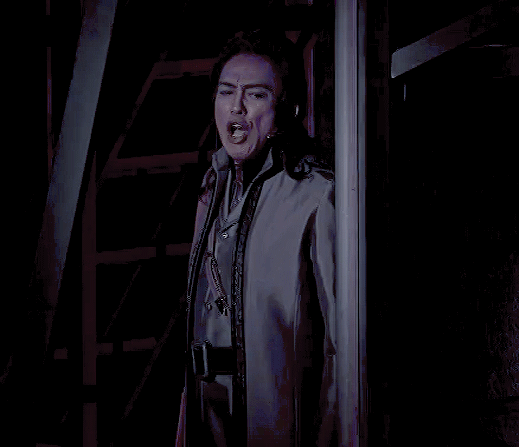

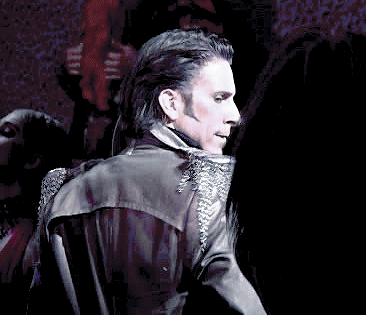


French Musical Challenge [7/30]
Favorite Male Character: Escalus (Romeo et Juliette)
#retj#romeo et juliette#frenchmusicalchallenge#frenchmusicaledit#resj#musicaltheatrenet#musicaltheatreedit#theatreedit#theatrenet#musicalgifs#musicalgif#european musicals#europeanmusicalsedit#asiantheatrenet#asiantheatreedit#Kazutaka Ishii#Boris Pfeifer#Frederic Charter#Leonardo Di Minno#Vladimir Dybsky#Attila Nemeth#prince escalus#my gifs
30 notes
·
View notes
Text
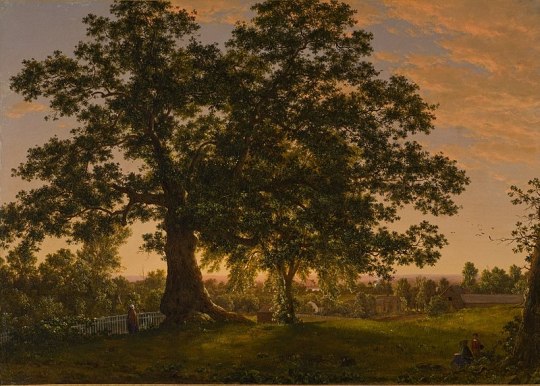
Title: Charter Oak
Artist: Frederic Edwin Church
Date: 1846
Style: Romanticism
Genre: Landscape
#art#art history#painting#artwork#museums#culture#history#landscape#romanticism#frederic edwin church
42 notes
·
View notes
Photo

Die Charter-Eiche bei Hartford, c.1846 von Frederic Edwin Church
(oil on canvas)
#landschaft#landscape#art#kunst#malerei#painting#eiche#Frederic Edwin Church#sunset#sonnenuntergang#new england#trees#graceful
5 notes
·
View notes
Text
Canterbury Christ Church University
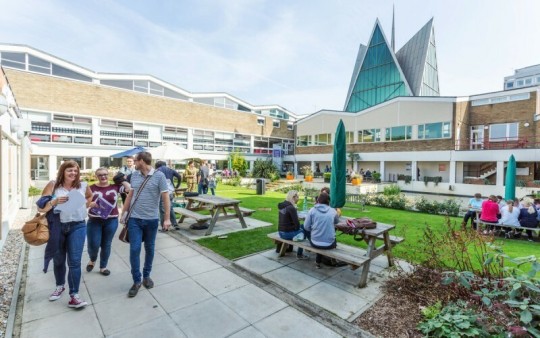
Overview of Canterbury Christ Church University
The Canterbury Christ Church University has evolved and grown dramatically over the previous 60 years, from a teacher training institute to over 400 courses and a student body of over 17,000 people. Canterbury Christ Church University's research was named "world leading" and "internationally significant" in the 2014 Research Excellence Framework. Allied health professions, politics and international studies, education, English language and literature, theology and religious studies, and other subjects excelled in this area. It is ranked 92nd out of 119 universities in the 2015 Guardian University Rating, 114th in the 2021 Guardian University Guide, and 127th in the Times University Guide.
History of Canterbury Christ Church University
Reverend Frederic Mason, the founding principal of Canterbury Christ Church College, built the groundwork for the college to address the demand for instructors in church schools. The first degree given by the CCCC was a Bachelor's of Education as an extension of the Certificate in Education, with classes held at the priory close to St. Martin's Church. The university thereafter extended to include a BA in Religious Studies. The Privy Council awarded Canterbury Christ Church College degree-giving jurisdiction in 1995. The CCCC did not receive university status until 2005, when the Royal Charter granted it, forcing the educational establishment to replace the word "college" with "university." The university was granted the authority to award research degrees in 2009.
With the addition of new engineering and technology centres, as well as new arts facilities, Canterbury Christ Church University has become more vibrant in both academic and research activities. This UK institution includes many campuses across Canterbury and Medway with numerous facilities, starting with the priory close to St. Martin's Church. The Sidney Cooper Gallery, Hall Place, Christ Church Sports Centre, St. George's Centre, Medway Campus, and Salomon's Centre for Applied Psychology are just a few of them. In 2014, the Canterbury Christ Church University was recognised for its research excellence. Other academic institutes, schools and colleges in Kent, and others have formed relationships with the university.
Student Statistics
Undergraduate –81%
Postgraduate –19 %
Full-time students –76%
Part-time students –24%
UK students– 95%
EU students-3%
International students –2%
Female – 69%
Male –31%
Faculties at Canterbury Christ Church University
Faculty of Arts, Humanities and Education
Faculty of Medicine, Health and Social Care
Faculty of Science, Engineering and Social Sciences
Professional Services departments
Breakdown of the Fee Structure
International students can expect to pay starting from £11,000
Scholarships at Canterbury Christ Church University
In the last 60 years or so, Canterbury Christ Church University has grown and evolved. This UK institution can help both UK and international students reach their scholastic and academic goals with over 400 courses and a research focus. The university offers a larger range of scholarships to make education more accessible to all students, particularly those who have demonstrated academic achievement. Students from the UK or EU countries who come from families earning less than £25,000 per year can apply for a £600 stipend each academic year.
Other forms of financial assistance, such as scholarships and bursaries, are available to students in a variety of areas, including arts, sports, and music. We can assist you with the application process if you want to explore your academic potential at Canterbury Christ Church University, finding your passion in one of the university's 400+ degrees.
Facilities & Services
The Christ Church Students' Union collaborates with the institution to improve all students' university experiences. Both undergraduate and graduate students can use the union and become more involved on campus by joining one of the many clubs. Personal academic tutors, student learning developers, and peer mentors are available on campus to assist students with their academics. They can assist students in completing assignments, comprehending comments, and achieving their academic and learning goals. Students can get objective wellbeing advice, as well as counselling and mental health support, as well as peer mentoring. Qualified expert practitioners provide mental health support at CCCU.
A disability advisory team is available to assist students with disabilities, regardless of whether they have an official diagnosis or not, by discussing any problems they may have. Untempts, the university's recruitment agency, assists students in finding part-time or temporary jobs at the university, the Christ Church Student Union, and other Kent businesses. Graduates can also obtain help from the university to improve their skills, increase their employability, get career guidance, gain start-up support, and find jobs.
Student Life
Canterbury has the advantage of keeping students close to other active cities in England like Chatham and Rochester, as well as other European countries. The city's global culture, which over 30,000 students from different colleges share, has an impact on the city. There are several cafes, bars, restaurants, clubs, cinemas, museums, and theatres, as well as excellent shopping opportunities. The Canterbury Ani fest animation festival, as well as various national and international exhibits at the Daphne Orem Gallery, provide entertainment for students. The Kent County Cricket Club, Medway Park, and additional sporting sites for football, rugby, golf, and hockey are available to visitors.
Living Accommodations
Self-catered rooms will cost £118 to £195 per week in 2020-2021.All first-year students at Canterbury Christ Church University can live on campus, where they will have access to high-speed WIFI, wired internet, bills, and on-site security. Choose from modern residences with or without en suite facilities in Canterbury or Medway. The university offers a team of people who can assist you in finding housing that fulfils all of your needs and fits within your budget. Most lodgings are only a 15 to 20-minute walk away from other facilities, regardless of where you are in the halls.
Transport
Cycling and walking are great ways to get about Canterbury. During the day, traffic avoids the city centre, making stores, bars, restaurants, pubs, and recreational venues more accessible. If you wish to travel to London, you can take the bus or the Eurostar from Ashford International. Gatwick Airport is only an hour's drive from Canterbury for international or domestic flights. Students can also board a ferry from near Dover to Calais, arriving in about one hour and 15 minutes.
0 notes
Text

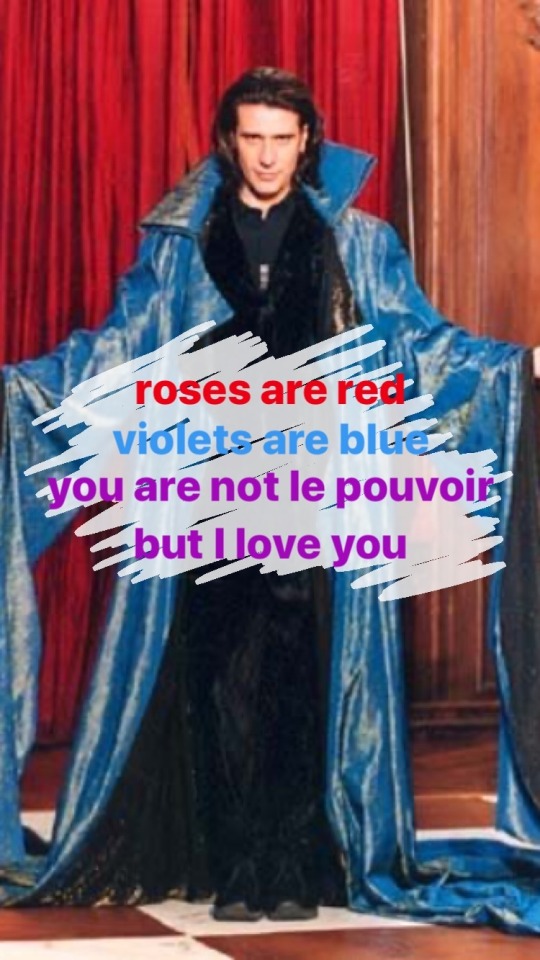
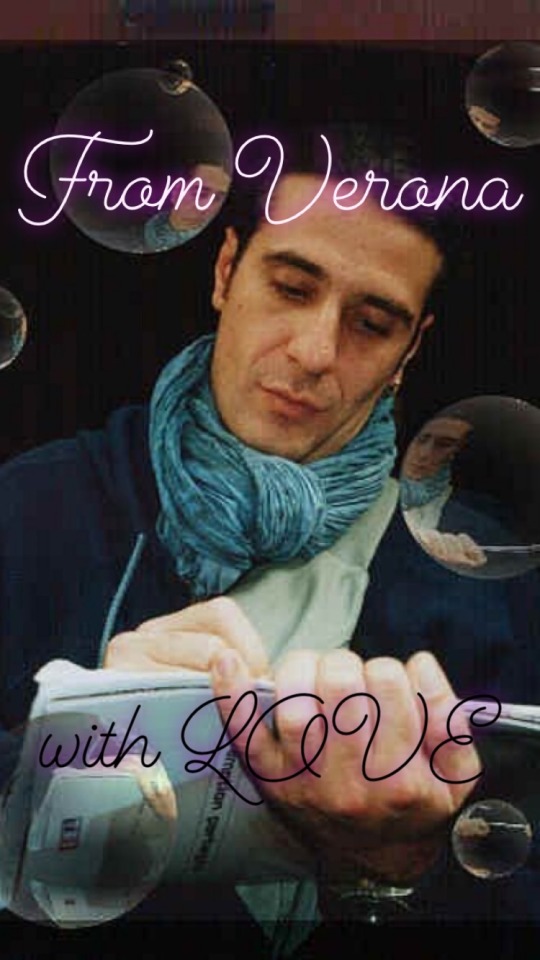


Happy Valentine’s Day, beloved fandom! 💜❤️💙
!!! Please don’t publish these on other websites without asking for my permission first !!! Не выкладывать на других сайтах без моего эксплицитного разрешения !!!
#retj#musicals#prince escalus#frederic charter#fred dear im sorry#ok im not#i love ya’ll fandom#valentine’s day#romeo and juliet#romeo et juliette
51 notes
·
View notes
Photo

Forgot to post this one here, a portrait I did some time ago of the amazing singer Frédéric Charter. :D
I had so much fun with this drawing and the little details. ^^
6 notes
·
View notes
Text
An Exploration Of My Synesthesia: pt. 1 - RETJ Edition
so it’s pretty much a year and a half ish since i discovered that ‘??? not everyone can see/feel music???’. so i’m finally putting this tiny project to life; basically, i’m gonna show you what different artists’ voices look like to me. however, instead of drawing it etc, i’m gonna show you through something else i’m passionate about: LUSH bathbombs.
yup, you read that right. i’m gonna show you voices through bathbombs. fun, yeah?
in this first part i’m picking some of the Roméo Et Juliette actors, bc i am still obsessed with them (oops). i’ll link to an example of their voice in their name, and picture sources are in the bathbomb name. please note that the colours aren’t gonna be completely accurate, as that is p much impossible
Damien Sargue - Roméo

Intergalactic
John Eyzen - Mercutio

Lord Of Misrule
Tom Ross - Tybalt

Mercury Retrograde
Toyoko - Benvolio

Thundersnow
Giulia Luzi - Juliette(/Giulietta)

Moon Spell
Riccardo Maccaferri - Benvolio
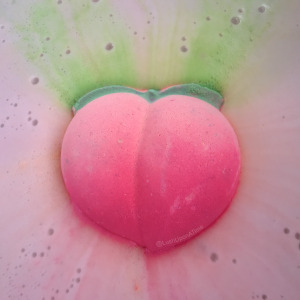
Peachy
Frederic Charter - Le Prince/Frère Laurent (here as the Prince)

Santa’s Grotto
Cyril Niccolai - Benvolio/Roméo (here as Benvolio)

Figaro Figaro
that’s all for now - i will be making more of these, so if you’re curious about an artist, send me an ask!
#retj#bath bomb#lush#synesthesia#romeo et juliette#Damien Sargue#John Eyzen#tom ross#toyoko#giulia luzi#riccardo maccaferri#frederic charter#cyril niccolai#an exploration of my synesthesia
39 notes
·
View notes
Photo
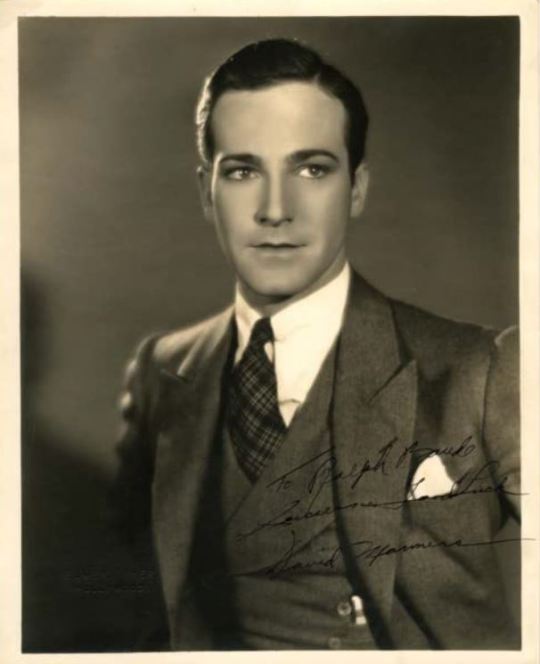

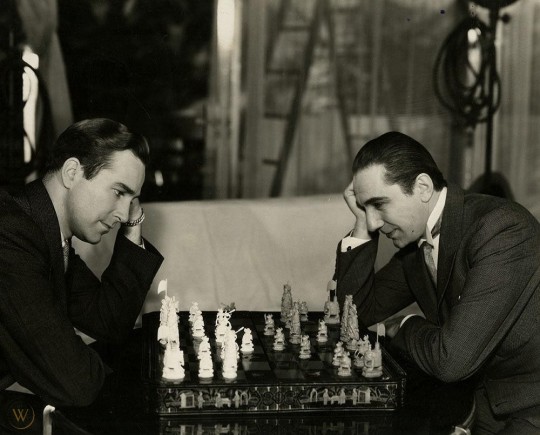
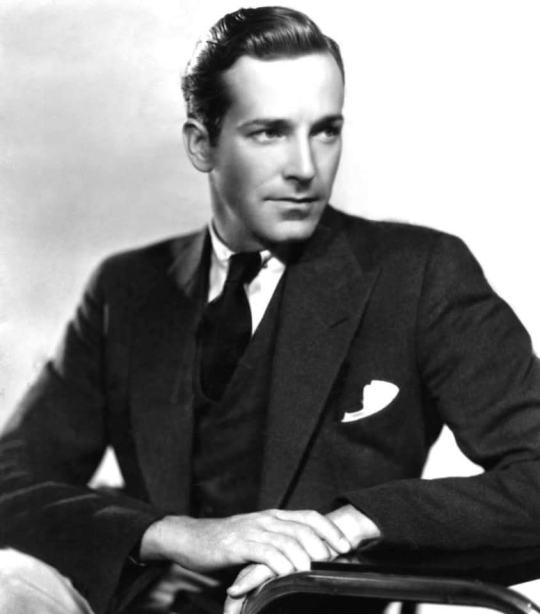

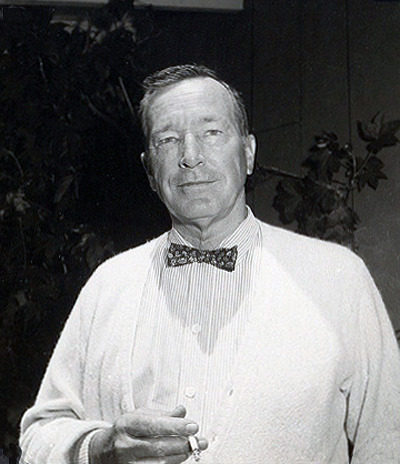
David Manners was born in Canada on April 30th, 1901, in Halifax, Nova Scotia. The son of British parents, Manners’ birth name was Rauff Acklom. The family moved back and forth between the US and Canada throughout his childhood, with Manners eventually attending the University of Toronto. There, he would become involved with the school’s theatre group. He made his stage debut in 1924, and made his film debut in 1929′s The Sky Hawk. His most famous role came in 1931′s Dracula as Johnathan Harker. He also appeared in other notable horror films from the era, such as The Mummy (1932) opposite Boris Karloff, The Death Kiss (1932), opposite Béla Lugosi, and The Black Cat (1934), with both Karloff and Lugosi. Manners managed to avoid the typecasting that would plague his costars, and maintained a very successful career as a romantic lead. However, he grew dissatisfied with Hollywood, and left in 1936. He would continue to act in theatre productions until 1952, when he retired from acting altogether. His exact reasons for his leaving Hollywood are unknown, though he admitted to never having liked the place. He also had joined the Screen Actors Guild as a charter member alongside Lugosi and Karloff in 1933, and that might have alienated him from producers. It has also been suggested that his personal life may have played a role in his decision to leave. After leaving Hollywood and establishing a successful career as a writer and philosopher, Manners married Suzanne Bushnell in 1929, but the two were divorced by 1932. Twelve years later, in 1948, Manners began a relationship with playwright Frederic William "Bill" Mercer. The two stayed together until Mercer’s death in 1979. Manners died 20 years later, at age 97, on December 23rd, 1998.
images #1 and #4 - promotional photos of Manners, image #2 - Helen Chandler and David Manners on the set of Dracula, image #3 - Manners and Lugosi behind the scenes of The Death Kiss, image #5 - a photo taken of Manners building his house in the Mojave Desert after leaving Hollywood, image #6 - Manners in 1967, photographed by J. Michael Click
20 notes
·
View notes
Text
“…The ideas that animate Harlequin romance novels, Game of Thrones, and Disney movies alike can be traced back to the nineteenth century. Look at the paintings of the Pre-Raphaelites and others influenced by them—works like John William Waterhouse’s “Lady of Shalott” (1888) and Frederic William Burton’s “The Meeting on the Turret Stairs” (1864)—and you’ll see some very familiar figures.
These canvases reflect popular Victorian understandings of medieval ladies: passive, slender, aristocratic, the objects of knightly devotion. These women have never laboured in the fields with sunburned necks or callused hands. Their clothing and flowing hairstyles are eclectic, designed more to make nineteenth-century audiences think about a distant, misty, heroic past than to accurately reproduce any given moment in the Middle Ages. And, they are, invariably, white.
Art doesn’t exist in a vacuum. These paintings were produced when European imperialism was at its zenith; when Darwinian theories of evolution were twisted to justify colonialism and social hierarchies based on race; and when a supposed early-medieval “Teutonic”—or Germanic—ancestry for the white Protestant populations of Britain and North America was claimed to be the reason for the explosive economic growth of those regions.
They were also painted at the same time that white people in Europe and the Americas were enjoying steadily increasing standards of living—in large part thanks to the backbreaking, and often coerced, labour of those in colonised places. Black and brown women helped to shape history, but Victorian society excluded them from the category of “lady” because of the colour of their skin.
Nineteenth-century thinkers drew on the medieval past in order to justify racial and class inequities, or burgeoning notions of nationalism. These thinkers racialised the medieval lady. They idealised her as white, passive, and unsuited to manual labour. In doing so, they made her into a rationale as to why her elite, white, female descendants could sip tea in parlours while brown and black women toiled in the fields—or in their houses—to bring them that tea. The status quo was given such a venerable heritage that it was made to seem natural, even inevitable. Such ideas were then, and are now, pervasive and insidious. They were absorbed by white women, by Disney animators, by the makers of Halloween costumes, and even by those who write histories.
But what happens if we take the medieval lady off her pedestal? What kind of woman do we see inhabiting the Middle Ages if we try to peel off the Victorian veneer of chivalry and politesse? Does looking at what medieval people actually did in the past tell us something about our own assumptions concerning race and gender? In part, this is a process where we have to reconsider the language we use. What do we mean by “lady”? What did medieval people mean by the term? Or, rather, since most texts produced in western Europe in the Middle Ages were written in Latin, what were the connotations which they associated with the word domina?
The first key difference is that the modern English word “lady” simply doesn’t have the aura of power which the Latin word domina did in the Middle Ages. A domina was a woman with authority and moral rectitude in her own right, not simply the consort or complement to a dominus (lord). A domina (and holders of other Latin titles applied to women in medieval records, like comitissa, vicedomina or legedocta) administered estates and adjudicated legal disputes. It did not matter whether she held her title by inheritance or through marriage. Those who held titles in their own right, or those who were widowed, could exercise significant power over fiefs and vassals.
For example, when Matilda, countess of Tuscany (1046-1115), was referred to as domina, it was because she controlled a large swathe of northern Italy. She was the mediator during the famous meeting between Pope Gregory VII and the German emperor Henry IV at her great fortress of Canossa. In doing so, she influenced the outcome of a major medieval power struggle. On his accession to the throne in 1199, King John of England installed his mother Eleanor of Aquitaine (ca. 1122-1204), as domina of the French territory of Poitou and gave her authority in all of his lands—a tacit acknowledgement of her political skill.
Eleanor even managed to expand queenly authority in some ways. She seems to be the first queen of England after the Norman Conquest to have regularly collected the “queen’s gold”, a one-tenth share of some of the legal fines paid to the king. This gave her a valuable (and somewhat independent) source of revenue—and with money comes power. As a more modest example, one contemporary of Matilda of Tuscany’s was a woman named Mahild of Alluyes, domina of a far smaller territory in northern France. She wasn’t a player in papal or imperial politics. Yet as wife and widow, she oversaw the affairs of her vassals and witnessed charters which they drew up in the chapter house of the nearby abbey of Marmoutier, which gave her considerable influence over their lives. And there are many, many more dominae in the sources.
Medieval aristocratic women were sometimes seen as passive by their male contemporaries; those with power who broke this mould were sometimes described in plainly misogynistic terms. But equally, their deeds could be lauded. For example, one of the great chroniclers of the early twelfth century, the Anglo-Norman Orderic Vitalis, wrote that the French noblewoman Isabel of Conches was “lovable and estimable to those around her.” He complimentarily said that she “rode armed as a knight among the knights”, and compared her favourably with Amazon queens.
Matilda of Boulogne (ca. 1105-1152), queen of King Stephen of England, was one of her husband’s most capable partisans during the Anarchy—the period of civil war that tore twelfth-century England apart. Not only did she head the government during her husband’s captivity, but proved herself a capable military commander. She directed troops into battle at the so-called Rout of Winchester and arranged for her husband’s release when he was captured.
A generation or so later, the English countess Petronella of Leicester (ca. 1145-1212) participated alongside her husband in the Revolt of 1173-74; she gave her husband military advice, rode armed onto the battlefield, and was even wearing armour when captured. These actions may not have been normal behaviour for a domina—administration and adjudication were more usual. But they were still within the bounds of possible behaviour for a medieval woman without endangering her status as a “lady.”
The Matildas, Mahild, Eleanor, Isabel, and Petronella: it is hard to imagine any of these dominae as the subject of a Waterhouse painting or the centrepiece of a Disney movie. They weren’t always victorious or virtuous; they could be ambitious and high-handed and hold ideas which most people today would find distasteful. And yet, whether medieval chroniclers approved or disapproved of these women individually, they didn’t think the very fact that they were active, decisive, and opinionated was out of the ordinary. Neither should you.
Nor would the colour of their skin have been thought a defining aspect of their status as a lady. There was certainly prejudice about skin colour in the Middle Ages. The relatively small number of non-white people in northern Europe means that we can’t definitively point to a woman of colour exercising political power there. But things were slightly different in southern Europe, in areas like Iberia—modern Spain and Portugal—which was long home to Christian, Jewish, and Muslim populations of multi-ethnic heritage.
While there were religious prohibitions against Muslim women marrying non-Muslim men, there are some scattered examples of intermarriages between dynasties in the early Middle Ages: Muslim women of north African or Arab descent marrying into northern, Christian royal families. For instance, Uriyah, a daughter of the prominent Banū Qasī dynasty, married a son of the king of the northern Spanish kingdom of Navarre; Fruela II, king of Asturias, married another Banū Qasī woman called Urraca. Their ancestry doesn’t seem to have posed a barrier.
Western Europeans may have only rarely had direct contact with non-white female rulers further afield—like the powerful Arwa bint Asma, queen of Yemen (r. 1067-1138)—but when they did, it could be in dramatic fashion. Shajar al-Durr, sultana of Egypt (d. 1257), famously captured Louis IX of France during the Seventh Crusade and ransomed him for an eye-wateringly large sum.
While historical examples of women of colour exercising prominent roles in Europe during the Middle Ages are few in number, skin colour didn’t limit the imaginations of white medieval Europeans. Medieval people often had clear anxieties about skin colour and blackness, but despite this racism they could still envision a brown- or black-skinned woman as a member of the upper classes, just as they did the white-skinned Mahild or Isabel.
For example, the early thirteenth-century German epic poem Parzival centres on the eponymous hero and his quest for the Holy Grail. Parzival has a half-brother, the knight Feirefiz, who is mixed-race. His mother, Belacane, is the black queen of the fictional African kingdoms of Zazamanc and Azagouc; the narrative praises her beauty and her regal bearing. As another example, a Middle Dutch poem written about the same time, Morien, recounts the story of the handsome, noble knight Morien, “black of face and of limb,” whose father Sir Aglovale fell in love with his “lady mother,” a Moorish princess.
However, the most vivid example is provided by medieval depictions of the biblical Queen of Sheba. Scholars think the historical Sheba likely lay somewhere in southwestern Arabia; other traditions place the kingdom in east Africa. Regardless of the queen’s historicity, various traditions grew up around her in the Middle Ages. Some of the most popular of these claimed that she had a son by the biblical king Solomon. She frequently appears alongside him in art, in elegantly draped garb as on the late twelfth-century Verdun Altar, or accompanied by courtiers as in an early fourteenth-century German illustrated bible: a beautiful black woman and a regal queen. When you think of a medieval “lady”—you could do worse than to think of her.
All of this should prompt us to look again, to reconsider how racialized Victorian ideals of womanhood still impact us—both in contemporary popular culture and also in our understandings of the medieval past. When we think about the Middle Ages, we should consider the impact of race, and especially whiteness, on how we think about it. That is not necessarily because our medieval forebears did so, but because our nineteenth- and early twentieth-century ones did so very much.
The idea of the “lady” was one of the useful fictions which they and others employed, glorifying white, upper-class womanhood as an apex of western achievement. This helped to make existing racial and imperial hierarchies seem like they had such a long history that they must be innate, biological: a simple fact of life. But it was a fiction, and a harmful one. If we are to better understand the medieval past, it is one we must set aside.”
- Yvonne Seale, “My Fair Lady? How We Think About Medieval Women.”
18 notes
·
View notes
Photo

Frederic Edwin Church - The Charter Oak at Hartford, 1846
103 notes
·
View notes
Text
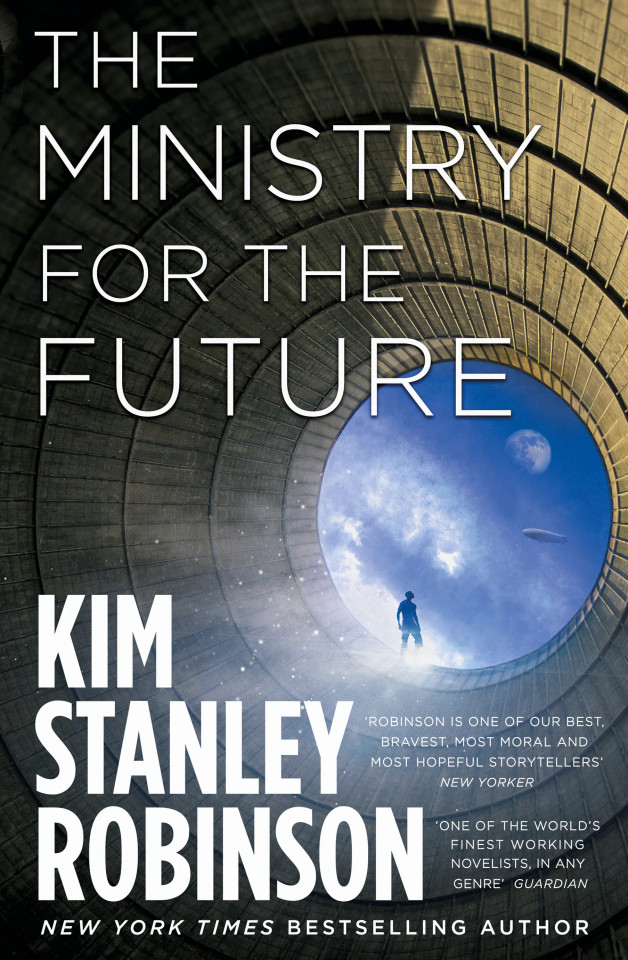
One of the very last events I attended before the lockdown was a thing in Silicon Valley attended by many old friends, but the best moment of all was the chance to hang out with Kim Stanley Robinson, a friend and inspiration.
That's when Stan told me he had just finished a book that might be his last-ever novel, The Ministry For the Future, and that his future work would be nonfiction, starting with his long-planned book about the Sierras.
I was stricken. Robinson's novels are a lifeline for me.
The first Robinson novel I read may just be my favorite: Pacific Edge, a green utopian novel about a successful transition to a post-climate-emergency, just and stable world. Re-reading it is a vacation from all my anxieties, still.
https://memex.craphound.com/2015/01/15/pacific-edge-the-most-uplifting-novel-in-my-library/
My first novel, DOWN AND OUT IN THE MAGIC KINGDOM, wouldn't exist without Pacific Edge. That was the book that taught me that small disputes over beloved local treasures could be as dramatic as (and microcosms for) global conflicts.
I have been both dreading and anticipating MINISTRY FOR THE FUTURE, not wanting to read my last KSR novel but also wanting so badly to read this one, because it's the book in which he imagines the end of capitalism.
You've heard the phrase, "It is easier to imagine the end of the world than the end of capitalism," variously attributed to Frederic Jameson and Slavoj Žižek. As the author of a couple of postcapitalist novels, I have a real appreciation for the details of that truism.
It's actually not all that hard to imagine a postcapitalist society - but imagining the actual END of capitalism, the euthanasia of the rentier, the reversal of the doctrine of virtuous selfishness, the abandonment of the idea that some are born to rule, that is damned hard.
And while PACIFIC EDGE is my favorite KSR novel, my favorite KSR series is the string of books that starts with 2012's 2312 - a string of books that really leans hard into imagining the actual end of capitalism.
xhttps://memex.craphound.com/2015/01/15/pacific-edge-the-most-uplifting-novel-in-my-library/
2312 is set 300 years into postcapitalism. It's a novel of solar-system-scale civilization, riven by its own problems and contradictions, filled with tech marvels, a tale of natural wonders that showcase Robinson's incredible, John-Muir-grade genius for pastoral writing.
2312 was followed up by Aurora, one of the best space-exploration novels ever written, about the arrival of the first-ever generation ship at its destination world, and the hasty retreat it is required to stage.
https://memex.craphound.com/2015/11/02/kim-stanley-robinsons-aurora-space-is-bigger-than-you-think/
The book provoked a vitriolic reaction from science fiction's great reactionaries! I love a book that enrages the right people, and I was delighted to publish Robinson's rebuttal to their peevish complaints.
https://boingboing.net/2015/11/16/our-generation-ships-will-sink.html
From there, we move on to New York 2140, a novel of a pivotal moment in the transformation of capitalism and its relationship to the climate emergency.
https://memex.craphound.com/2017/03/18/new-york-2140-kim-stanley-robinson-dreams-vivid-about-weathering-climate-crisis/
These are like an artilleryman rangfinding a mortar, first overshooting his target and then walking his fire back, drawing closer to his bullseye. For Robinson, bullseye is the moment at which our society is transformed into one that can survive the coming emergencies.
It's telling that the 2312 books never got there. It is so fucking hard to imagine the end of capitalism.
But that is what The Ministry For the Future Does.
Sort of.
It's a novel about a specialized UN agency, chartered through the Paris Climate Agreement to represent unborn generations and the natural world in legal proceedings related to climate devastation.
Talking about this book, Robinson has described it as a kind of futuristic documentary, told in many voices, as a way of describing a phenomenon as vast as this global transformation.
https://pluralistic.net/2020/10/14/final_ver2/#ksr
Like many docs, it follows a couple of main characters, but weaves in dozens of other voices, some of whom we hear from only once or twice, recounting pivotal moments in which a moment calves away from our reality as we know it - moments of shear, giddy and terrifying.
Robinson is so good at this stuff. This is the book that he has been practicing for all his life. The vignettes are superb little jewels, mostly illuminating flashbulb moments in the lives of strangers met fleetingly.
But some of the most powerful moments don't even have characters: there's a transcript of the openng a fictional congress of global climate remediation groups after the crisis that is just an alphabetical list of countries and their associated projects.
This literally made me burst into tears of joy, bursting with hope at the thought that we could, as a species, spawn so many evocative and hopeful projects to save our world, our species, and our nonhuman cohabitants.
Robinson's versatility is on glorious display here: from long lists of hypothetical ecological projects, he veers into closely told moments of human endeavor in the natural world, showcasing his pastoralism with scenes so vivid you could reach out and touch them.
But all that said, the most interesting thing about this book is the stuff that Robinson couldn't or wouldn't put on the page. Robinson's hypothetical scenario for the end of capitalism is a baroque scheme of global cryptocurrency money-creation tied to carbon drawdown.
His technocrats trick capitalism into spending itself out of existence in a plan that is by turns brainy and daffy (as all blockchainism tends to be), with some pretty epic handwaving (especially when it comes to the breakup of tech monopolies).
But all of that would fail were it not for acts of absolutely brutal, ruthless terrorism. Robinson's transformation isn't merely about the carrots of double-bluff get-rich-quick schemes, it's heavily dependent on the stick of terror.
The aviation industry isn't (just) replaced by airships and rail because it's better and cleaner - but also because parties unknown use drones to bring down every private jet in the sky, and then commercial liners, until the aviation industry seizes up and dies.
And the world doesn't abandon beef because vegans win the moral argument or because greenies win the practical one - the decisive factor is drones that dart an unknowable plurality of the world's cattle with bovine spongiform encephalopathy.
There's more - pitiless, remorseless, anonymous. And while Robinson gets up close and personal with one traumatized individual who engages in an ecologically motivated, short-lived (and nonlethal) kidnapping, we never meet any of the terrorists or their victims.
The terror that begets the transition is recounted in the dry language of an encyclopedia entry, not dramatized like the pivotal moments of so many other characters.
It's a very telling omission.
My 2019 novella "Radicalized" is about an online community of men who, after watching their most treasured family members die slow, painful, preventable deaths because of insurance company fuckery, become suicide bombers who murder health execs.
https://www.nakedcapitalism.com/2019/05/who-says-violence-doesnt-solve-anything-a-review-of-radicalized-four-tales-of-our-present-moment-by-cory-doctorow.html
Writing that story was an intensely uncomfortable experience (and, judging from reader comments, it can be uncomfortable to read, too).
It's one thing to recognize that a systemic problem might not be solved without grotesque, mass violence, and another to put yourself in the shoes of either the perpetrators or the victims.
Robinson's end of capitalism is, superficially, a story of a transition, not a spasm, not a capital-T Terror. The lives we inhabit in this novel are people who are engaged in struggle, but not mass-murder.
But right there on the page is Robinson's uncomfortable and only partially elided conviction that we're not in for a transition, but rather a bloodletting, a reckoning commensurate with the ecocidal crimes that led up to this moment.
MINISTRY is a book that, on first consideration, feels like a utopia - not merely for the beautiful descriptions of people, animals and environments finding a way through the emergencies, but for the emergencies resolution.
But on closer examination, MINISTRY represents the dark fears of one of our brightest, most hopeful writers, that the world can only be saved by means that are literally too terrible to contemplate up close.
It's an uncomfortable read. It's a brilliant book. If it indeed turns out to be Stan's last novel (oh please don't let it be Stan's last novel), it will be a fitting capstone. But the subtext of this book is that we are past the point of no return.
Not only will rescuing our planet entail sacrifices of species, habitats, and coastlines - it will also entail sacrifices of the moral convictions that make vast spectacles of bloodletting unthinkable.
41 notes
·
View notes
Text
Dragon Age Characters as weird things my friend and I said: Part 3
The Inquisitor: I got my 2 smart minutes of the week.
Sera: I go to church, I see a dick, I turn around, I see a tit.
Vivienne: *With a monotonous voice* What a ride, during the last 3 hours I felt more emotions than in the past 2 years.
Cassandra: You’re going to war, not Berlin fashion week.
Josephine: Once in a lifetime you can commit tax fraud.
Cullen: *Trying to explain unisex bathrooms* You know it was one of those bisexual toilets.
Blackwall: 3 am is usually my existential crisis time.
Solas: Truly shakespearean. Nearly had a stroke spelling this.
Iron Bull: Merc not for the weapons but for the ass.
Cole: Being dead won’t make me less anxious.
Dorian: At exactly 20:00 I overreact.
Harding: To bi or not to bi.
Requisition Officer: Go fetch me some needles.
Krem: Can’t even speak properly, if you remember.
Valta: Imma have to fix my sleep schedule in one day… and I am gonna fail.
Renn: Chilling in the cellar.
Celene: The French in a nutshell: we ain’t doin’ shit, bye.
Gaspard: Germans are not known for minding their own business.
Samson: Guess ya boi ain’t unemployed no more.
Mother Giselle: Blasphemy at it’s finest. It happens my dude.
Frederic of Serault: I know you love weird shit so here you go.
Servis: I am going to hell, but this person as well.
Charter: Make the stitches before they become snitches.
Bram: I once lost my pants playing the kettledrum.
#dragon age meme#dragon age#dragon age inquisition#dai#the inquisitor#josephine montilyet#cullen rutherford#cassandra pentaghast#leliana#da as quotes#we complete the set
113 notes
·
View notes
Photo
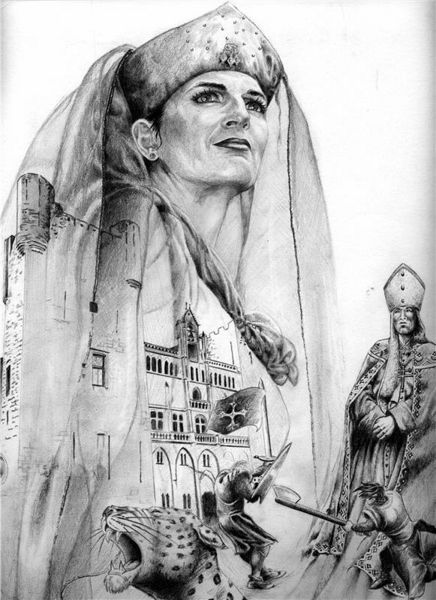
(Art by Mariline Etero)
Ermengard of Narbonne - The lady of the troubadours
Ermengard (ca. 1127/1129 -ca. 1194) was viscountess of Narbonne, in southern France, in her own right. She exercised a major political and cultural influence and led her army in the field in numerous occasions.
Ermengard was the daughter of the viscount of Narbonne Aymeri II and his wife, Ermengard de Servian. Her father died in battle in 1134 making her the heir to the viscounty of Narbonne. Several attempts were made to control her and her land, including a first marriage with Alphonse Jourdain, the count of Toulouse. This union caused, however, a major political upheaval since it threatened the balance of powers in the region. The wedding was thus dissolved.
She then married Bernard of Anduze, her cousin, who was probably forty. He, however, vanished totally from the city and Ermengarde’s life after the marriage was concluded. No records of the city or its countryside mention him again.
No longer a paw in the hands of others, Ermengarde took an active part in defending her lands and became an important actor in the local wars. By 1143, she led troops into battle against feudal overlords, the counts of Toulouse, and strengthened her power over her vassals, quelling unsuccessful revolts. She came with her army at the aid of the count of Barcelona at the siege of Tortosa in 1148 and again at the siege of Les Baux in 1162-1163. Ermengarde was also a staunch royalist and offered her help to king Louis VII of France during his campaigns in southern France.
She notably wrote to the king:
“You have admonished me to firmly hold the peace with the count of Toulouse and to serve him. This I have done and on the fifteenth day of the Blessed Mary I will march with my army against his enemies. Now and always, unless he prevents me, I will prize him with your love. Farewell, my lord”.
She personally led troops in battle again in 1172-1773 during a revolt of the nobility of Aquitaine against the harsh rule of King Henry II of England, duke of Aquitaine and husband of Eleanor of Aquitaine. Ermengarde left a very military impression. The poet Andrew the Chaplain places the following words in her mouth in his treaty On Love:
I myself will ride there
Wearing my coat of mail, my shining helmet laced on,
Shield at my neck, sword at my side,
Lance in hand, ahead of all others.
Though my hair is grey and white
My heart is bold and thirsts for war.
Ermengard was representative of the power that noblewomen could exercise at that time in Spain and southern France. One of her predecessors, Ermesinde of Carcassonne, wielded both political and military power. Other women took part in military actions. In the early 11th century, Gidinild, a member of the lesser nobility of Catalonia, conquered Cervera at the head of a small force, built a tower there and was recognized as a castellan by countess Ermesinde. Rixendis of Parez, early in the 12th century, joined a posse of village lords to attack mills that she and her followers claimed for them. The wife of Bernard of Nissan also took revenge on her husband’s enemy.
Apart from her military leadership, Ermengard was noted for the wisdom of her government. Charters show very clearly that she was the one in charge. She was a skilled politician and diplomat. Since Narbonne was a very prosperous city with a port, she had to use all her resources to protect it. Her court was also one of the most remarkable in Languedoc. She welcomed troubadours who sang her praises. She also made several donations to religious institutions.
Since she was childless, Ermengard named in 1192 her nephew, Pedro de Lara, as her successor. Though she had fended off all her rivals before, she couldn’t defeat this one. Her nephew seize the title of viscount and acted as if he had all lordly powers. Ermengard was expelled from the city and died in 1196 in Roussillon, abandoned by all.
Bibliography:
Cheyette Frederic L., Ermengard of Narbonne and the world of the troubadours
McLaughlin Megan, The woman warrior: Gender, warfare and society in medieval Europe
Porter J. M. N. “Ermengard of Narbonne”, in: Higham Robin, Pennington Reina (ed.), Amazons to fighter pilots, biographical dictionary of military women, vol.1
#Ermengard of narbonne#history#french history#france#occitania#12th century#middle ages#medieval history#medieval women#warrior women#women in history#badass women#war#rixendis of parez#ermesind of Carcassonne#Gidinild#wife of Bernard of nissan#11th century
32 notes
·
View notes
Photo
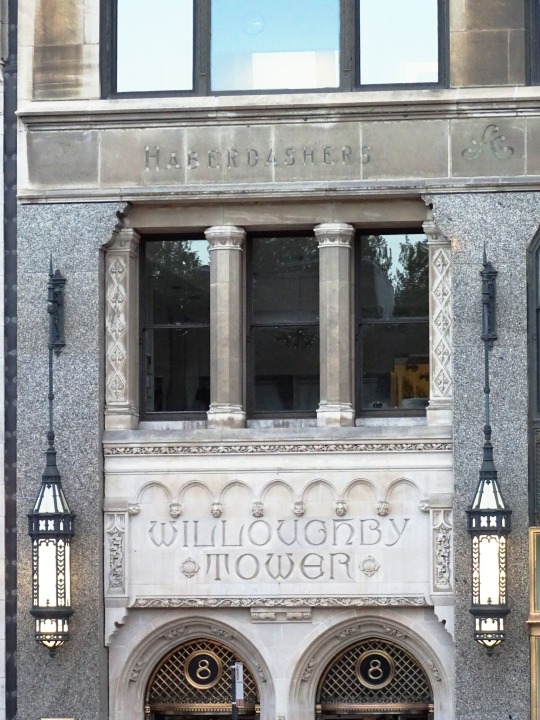
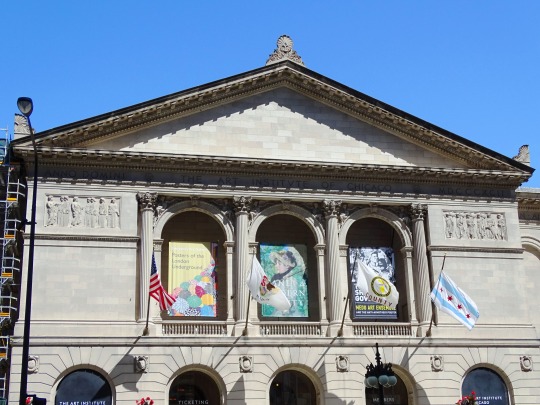
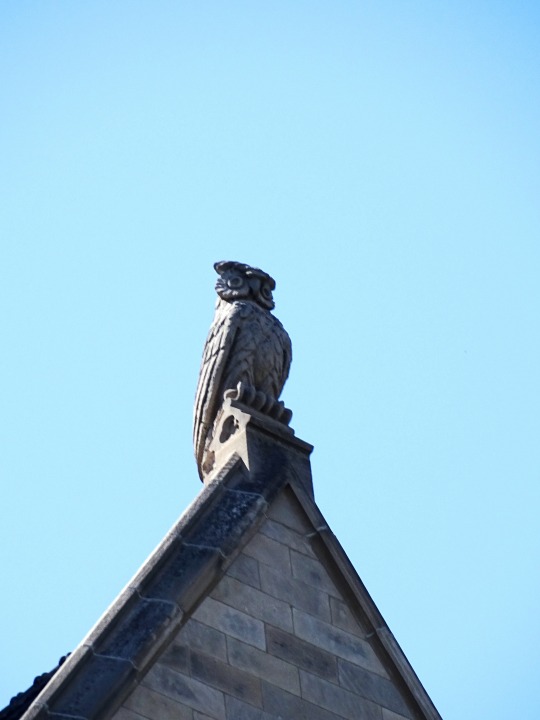
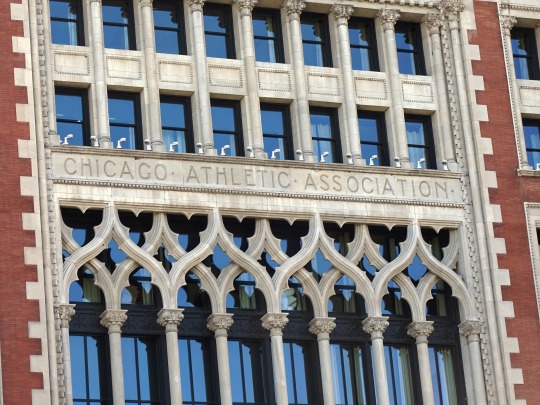
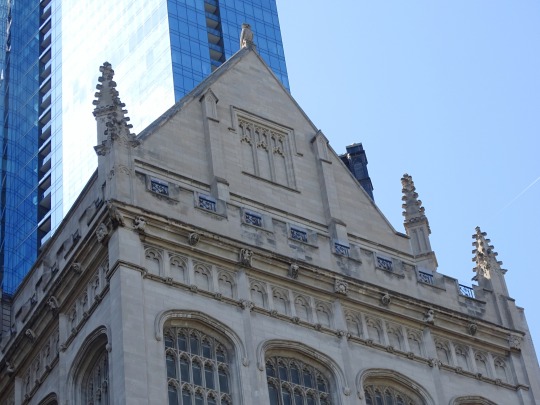
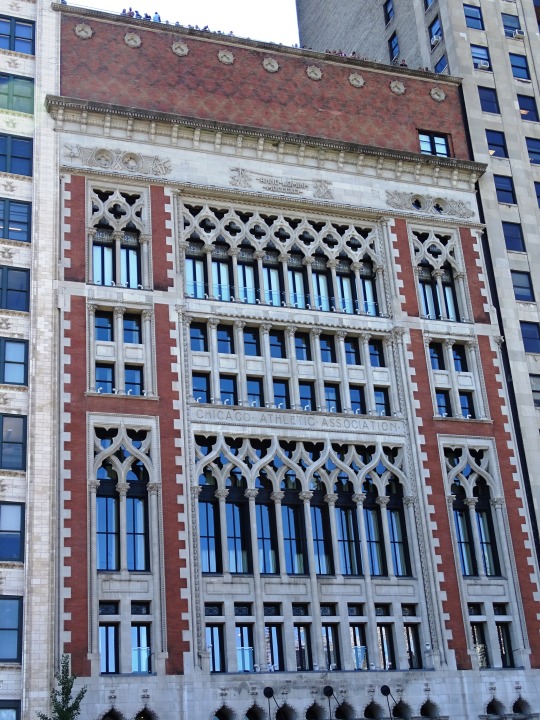




Architecture in Chicago (No. 6)
The University Club of Chicago is a private social club located at 76 East Monroe Street at the corner of Michigan Avenue & Monroe Street in downtown Chicago, Illinois. It received its charter in 1887, when a group of college friends, principally alumni of Harvard, Yale, and Princeton, founded the club hoping to further their collegial ties and enjoy intellectual pursuits.
Though officially chartered in 1887 by university graduates for "the promotion of literature and art, by establishing and maintaining a library, reading room and gallery of art, and by such other means as shall be expedient and proper for such purposes", the University Club of Chicago's history begins in 1885 when a group of Harvard men formed an association of college alumni in a similar fashion to the University Club of New York. The primary requirement of admission remains a college or university degree.
The club's first home was on the third and fourth floors of the Henning & Speed Building at 22 West Madison Street. The second club home was a stand-alone building at 30 North Dearborn. The first committee on literature and art was established in 1895, the library in 1897 with 1000 volumes. Honored guests included Admiral George Dewey (1900) and Winston Churchill (1901).
The club's present building, begun in 1907 and completed in 1909, is a historic landmark designed by notable architect Martin Roche, and is arguably the first "gothic skyscraper". At a cost of over $1.1 million, it was one of the most important club buildings of its day and continues to be an architecturally significant structure.
The club's centerpiece, Cathedral Hall, was based by Roche on Crosby Hall in London. It is adorned with stained glass windows by artist Frederic Clay Bartlett and seals representing distinguished universities in the United States and Europe, including Harvard, Yale, Princeton, Brown, Columbia and Northwestern. According to one writer:
There are other historically great interiors in town: Auditorium Theater of Adler & Sullivan and Mies van der Rohe's Crown Hall are only two of the first to come to mind. But among places where people convene to enjoy good food and companionship, I can think of no single room in this wonderfully composed and constructed city that is more stunning, that clears the sinuses more speedily or whips the viewer more persuasively into social attention than Martin Roche's Cathedral Hall.
Other club facilities include: private dining rooms, restaurants, squash courts, bath department and pool, fitness facilities, library, business center, outdoor terrace, art gallery, and overnight accommodations available to members and their guests. The club has played a key role in the development of squash in Chicago and the U.S., including hosting the annual Windy City Open each year.
Source: Wikipedia
#Willoughby Tower#architecture#cityscape#summer 2019#Chicago#USA#façade#original photography#Illinois#travel#vacation#Midwestern USA#The Art Institute of Chicago#University Club of Chicago#Martin Roche#gothic skyscraper#Great Lakes region#daylight#night shot#reflection#Windy City#Chitown#the Loop#downtown#landmark#tourist attraction#detail#close up
6 notes
·
View notes
Photo

MWW Artwork of the Day (12/19/19)
Frederic Edwin Church (American, 18261900)
The Icebergs (1861)
Oil on canvas, 163.2 x 285.1 cm.
The Dallas (TX) Museum of Art
The Icebergs" is Frederic Edwin Church's masterpiece. The seductively inviting colors, glowing subterranean light, and glossy, tactile surfaces of the icebergs attract the viewer's eye. Yet in reality, the scene is an inhospitable place filled with danger, as the broken mast in the foreground indicates. When it was first exhibited at a Civil War fundraising exhibition, critics hailed it as "the most splendid work of art that has yet been produced in this country." Both sides of the Atlantic thrilled to this dramatic scene, which was based on sketches made by the artist during a monthlong chartered boat trip in the North Atlantic, off the Canadian coasts of Newfoundland and Labrador. After its successful exhibition in England, "The Icebergs" was purchased by Sir William Edward Watkin, a railroad baron. Its subsequent history is almost as dramatic as the scene it represents: largely forgotten, the painting eventually wound up in the collection of an English school before being triumphantly rediscovered. It broke all American art records at auction in the 1970s, when it was purchased and donated to the Dallas Museum of Art by an anonymous benefactor. (from the Museum catalog)
2 notes
·
View notes
Note
Friar Laurence and Prince Escalus for the ask meme XD
Hello and thanks, wahah, now that’s what I call a perfect ask!
Friar Laurence (or Lorenzo, as I like to call him):
favorite thing about them: his general goodness. I love that he is a benign and good-natured character, very understanding and willing to help.
least favorite thing about them: he really should have thought of telling someone ahem, the Prince, ahem about the whole “secret marriage and fake death” affair instead of just keeping it all secret like a little boy playing spy. So many problems could’ve been avoided, but no. (But I still love the man).
favorite line: all of them! And in particular, this part of “J’Sais Plus”:
La vie était facileIl suffisait d'aimerMais l'encre des EvangilesDans mon coeur a séchéOh, Dieu de tous les hommesToi qui sait tout sur toutEcoute la voix d'un hommeQui te dit à genouxQu'il devient fou
brOTP: Romeo, in a way, especially if you think of the new Italian Lorenzo. They’re such good bros there! xD
OTP: Prince Escalus (obviously).
nOTP: everyone but Escalus? xD Idk, I just don’t really ship him with anyone else…
random headcanon: 1) in a modern setting, Lorenzo is a surgeon; 2) when it comes to escalawrence, Escalus is the one to fall in love first, but it is Lorenzo who confesses first.
unpopular opinion: as opposed to the way he’s portrayed in many versions, Lorenzo is actually not that old, 40 years maximum. I’d even say 36 to 38.
song i associate with them: “Angel” by Poets of the Fall.
youtube
favorite picture of them: all credit goes to Julien Vachon and my dear Rubick Chen.

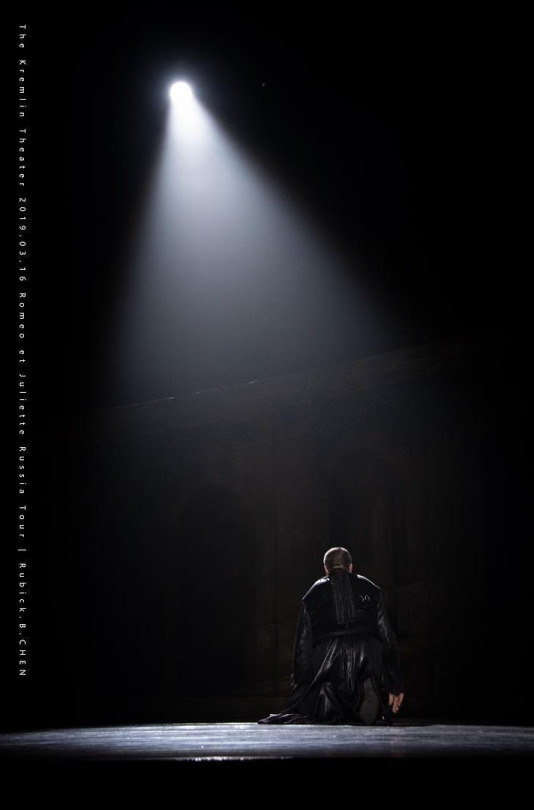
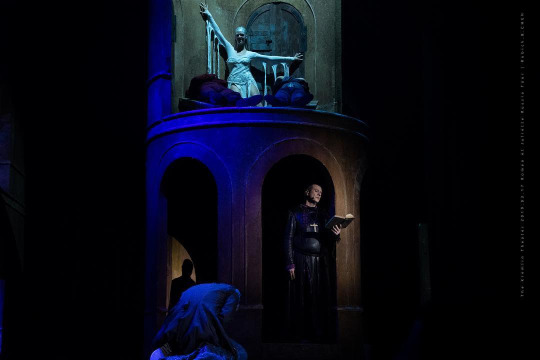
Prince Escalus:
favorite thing about them: I admit that these features may be more of a headcanon than not, but I love the man’s strength and determination. He’s immensely charismatic, for sure; but it’s a character whom I - first of all - respect and admire because of how strong and resilient he is. Even based on the La Vengeance scene after the duel, it’s clear to me that Escalus hides his emotions well. He seems calm on the surface, but on the inside, there is a storm that no one is meant to ever catch a glimpse of. And being calm and rational and fair, all the while hiding that storm inside you… that takes immense strength. And that aura of strength-despite-all-the-pain was what drew me to him in the first place; and it’s still my favourite aspect of this character.
least favorite thing about them: this is more about the way he’s shown in some versions, thanks to the Le Pouvoir thing (a grateful shoutout to the Austrian and the Hungarian versions for leaving it out). I don’t like this lust for power he’s shown to have, so I invented a separate explanation for this, because I love the song itself, I only don’t like what it does to the whole image of the character.
favorite line: guys, honestly, come on, it’s “favourite lineS”.
1) Austrian:
Willkommen in der Stadt!
(”Verona”. Iconic, fucking iconic, man).
Ich als Fürst hatt’ hier die Macht,Der Hass hat mich um sie gebracht.Nur der Friede war mein Ziel,Bis meine Welt zerfiel.…Viva Verona, dunkles Verona.
(”Verona II”).
2) French:
On m'envie mais de quoi?On dit lui en parlant de moiOn me craint on me croitPour qu'ils aient chaud j'ai froid…Le pouvoir ça brûle en vousLe pouvoir ça vous rend fouLe pouvoir on s'y cramponneEt quand il vous abandonneOn en meurt!
(”Le Pouvoir”)
brOTP: idk… I headcanon that he has a close relationship with his nephews (Mercutio and Valentine), but that’s not a brOTP. I also headcanon that he was best friends with his younger sister Beatrice, his nephews’ mother, in their childhood and youth and up until her demise. Guess it counts as a brOTP?
OTP: Lorenzo, Queen Mab, der Tod, Juliet (in various AUs). Benvolio, if it’s the Hungarian version where Escalus is younger than everywhere else. Mercutio, if they’re not related by blood (and only in the Italian version). Also I now have a headcanon that (in some AUs of mine, especially in the modern AU) he was married once but his wife died very tragically, together with their child (either unborn or still very young), well before his sister died and left her children in Escalus’s care… and I’ve yet to come up with his wife’s name, yeah.
nOTP: pretty much everyone else.
random headcanon: 1) Escalus sings really well and can play more than one musical instrument. 2) in the modern AU, Escalus works in the police. Bonus round, because I feel like it: Escalus and Lorenzo have matching tattoos which depict two intertwined snakes. Escalus’s is on his left bicep, covering an old scar he got on an operation. Lorenzo was the one to patch him up afterwards; and that was when Lorenzo couldn’t hide his feelings for Escalus anymore, and they’ve been a couple ever since.
unpopular opinion: more of a headcanon rather than of an unpopular opinion, but oh well, Escalus is afraid of spiders.
song i associate with them:“My Dark Disquiet” by Poets of the Fall.
youtube
favorite picture of them: can’t find my all-time favourite atm, so I’ll post a sketch I drew based on it, ok?
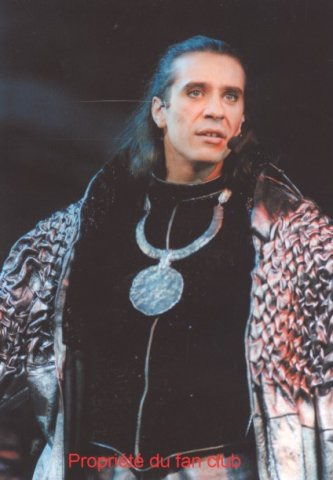


Whoa, that took long! Hope you enjoy this monsterpost, my lovely anon! :3
#ask meme#prince escalus#friar lawrence#friar laurence#retj#musicals#frederic charter#boris pfeifer#shadowofthemoth is drawing#Anonymous#jesus what's up with the formatting?#I had to edit this again because everything went rogue after publishing#sorry
7 notes
·
View notes